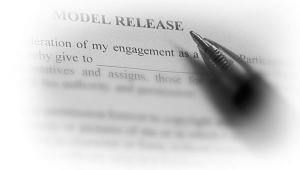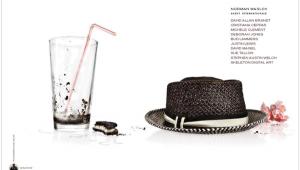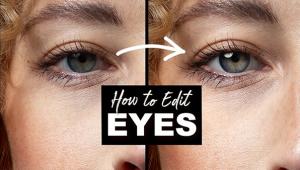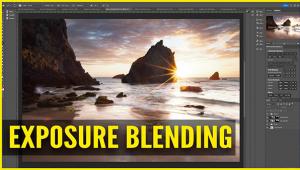Copyright For Photographers; Good Advice From A Well-Known Intellectual Property Rights Attorney
At every workshop and class I teach the subject and question of copyright comes up. I deal with copyright as a photo rep on every photo shoot I negotiate. Some photo clients know what type of usage they need to purchase and some do not. Some photographers can negotiate copyright usage without hesitation, but many photographers still have questions about the basics of copyright law.
To debunk some myths and get on a reliable legal track I talked with Stephen Spataro of Spataro & Associates (www.spataro.com). Spataro & Associates is especially well-known to most photographic associations, having represented them and many of their members in intellectual property litigation for over 20 years. They are often brought in by photographers as the experts in legal matters involving relationships with insurance companies; reps; assistants; employees; contractors; third-party suppliers; clients; model, advertising, and design agencies; models; stock agents; and publishers.
Their expertise in technology, e-commerce, and the Internet has helped them prosecute and defend photographers’ rights before the US Copyright Office, the US Trademark Trial and Appeal Board, the California Labor Commissioner, and trial and appellate courts throughout the US. Spataro & Associates is rated “AV” in the Martindale-Hubbell Law Directory. The legal ability rating of “A” means very high to pre-eminent and the “V” means a very high general ethical standard.
Shutterbug: What types of cases most commonly come to your firm for copyright litigation? Are the photographers usually the plaintiffs?
Stephen Spataro: We handle a wide variety of copyright cases ranging from computer software to jewelry designs to motion pictures and other visual images. Our photographic cases are approximately 70 percent prosecution
work and 30 percent defense work. We have defended a number of photographers from claims that they infringed photos of other photographers.
SB: I get asked this question by photographers in every business class I teach: “What percentage can they change of someone’s copyright protected work and make it their own?” How do you answer this question?
SS: There is no percentage. It always depends on the particular facts. There are many myths in the visual art industries and some have been perpetuated by art directors. Each situation depends on the nature of the photo, what elements of the photo are protectable, and the nature and quantity of what is taken.
Copying a very small part of the “heart” of a highly unique and great photo can constitute unauthorized use and infringement. The test to determine infringement of visual art is often more qualitative than quantity driven. Some photos are so unique and powerful that their essence cannot be copied without infringing. A copyright plaintiff must prove that the defendant had access to the copyrighted photo and that the infringing photo is substantially similar.
The rule in the Western US, known as the Ninth Federal Circuit, requires a lesser showing of substantial similarity if there is a strong showing of access. For example, if an ad agency file contains a copy of the copyrighted photo or that photo was shown by an art director to someone as a “comp” (comprehensive sketch of the ad) less substantial similarity will be required to win.
SB: How does digital technology affect protecting the photographic image issue?
SS: Many legal issues are basically still the same! It does not matter whether the client is scanning a print or pulling an electronic file from your website to view your portfolio—copying is still copying. Technically, downloading files to view your website copies your images onto the client’s hard drive but just looking at the images is not the problem. Copyright issues come into play based on how the viewer then uses your image.
SB: I find the “poor man’s copyright” is still being taught in some schools. The student photographers are told if they mail (or e-mail) a copy of their photo back to themselves that they are protected from infringement. Can you forever rid us of the myth of this “poor man’s copyright”?
SS: Yes, it has no legal significance. All that this technique may provide is possible proof of the “date of creation” but there are much better digital date/time stamp records and other information on digital storage devices to prove when the image took tangible form. But this is almost never an issue anymore. I recommend photographers register with the Copyright Office all of their photographs that are distributed. It’s relatively straightforward—you use Form VA—it is available online and you can now register online (see www.copyright.gov).
If you don’t register prior to an infringement you can’t get two key legal benefits: the right to attorney’s fees and to make a statutory damage election. Generally speaking, if you think the image is important enough to send out to clients and prospective clients or otherwise place into distribution then it is important enough to register. Don’t forget the licensing agreement! Your written agreements with clients and the rights you grant and reserve are very important to further protect your legal rights.
SB: I also get legal questions about owning copyright being in conflict with privacy rights (e.g., needing a model’s release to sell the photo if their image is recognizable). Can you clarify the two protections and how they can work together and what can happen if they don’t?
SS: They are separate, distinct rights and are completely different. Copyright is basically the right to reproduce your work, to prepare derivative work, to publicly display your work, and to distribute your work to others.
When you have a recognizable person in your image generally speaking you need their consent for a commercial or advertising usage of that image. This consent usually takes the form of a privacy or publicity release (model release). Generally speaking, the right of privacy only prevents the use of a person’s image or likeness for advertising or commercial use. It does not include the right to stop all use. A fair or editorial (magazine or newspaper) use without a privacy release is protected by the constitution. Is it newsworthy? Is it scholarly? Is it educational? Is it critical or other protected commentary? How much of the likeness did you use? How central is the image to the final use? These kinds of questions may arise to determine if a use is constitutionally protected and most often is always decided on a case-by-case analysis.
The courts try to balance the privacy rights of the individual with the First Amendment right to freedom of expression. When artistic expression involves a recognizable person and is for pure commercial gain, the person’s right of privacy/publicity may be violated. However, if you add a significant creative and transformative expression beyond just their image which transcends that image and becomes something more significant, then you may have a constitutional protection. It depends on the facts.
SB: Today, much of photography as content is delivered electronically and used by clients in new technology media; does this make the traditional control and protection of your copyright less valid? What do you recommend
to today’s photographers for basic copyright protection?
SS: The traditional controls are still legally valid but technology can help you. Have a plan and use it for managing your copyrights, such as imprinting images with your copyright notice, your e-mail address, your usage policy, and how clients can request the usage. Watermarks and other identifying information contained in an image are also helpful.
A photographer should never send a client an image or file without something in writing saying what the client may and may not do with the image or file. For example, your cover e-mail may say that the image is for personal and limited viewing by the client only and may not be used in any other manner without your prior written license. Providing an image to a client without saying what may or may not be done with an image is not wise.
Resources
Want to learn more? Here are Maria Piscopo’s reading and resource recommendations:
Author’s Copyright Resources And References:
• www.copyright.gov/help/faq/faq-protect.html
• www.ipcenter.com
• www.wipo.int
• www.templetons.com/brad/copymyths.html
• www.pdimages.com/law/10.htm
• www.digimarc.com/mypicturemarc
• www.allworth.com (search “copyright”)
Author’s Association References:
• www.asmp.org/news/spec2008/orphan_update.php
• www.ppa.com/i4a/pages/index.cfm?pageid=16
• www.aspp.com/
• www.editorialphoto.com/copyright/
• www.pacaoffice.org/library.shtml
- Log in or register to post comments
















































